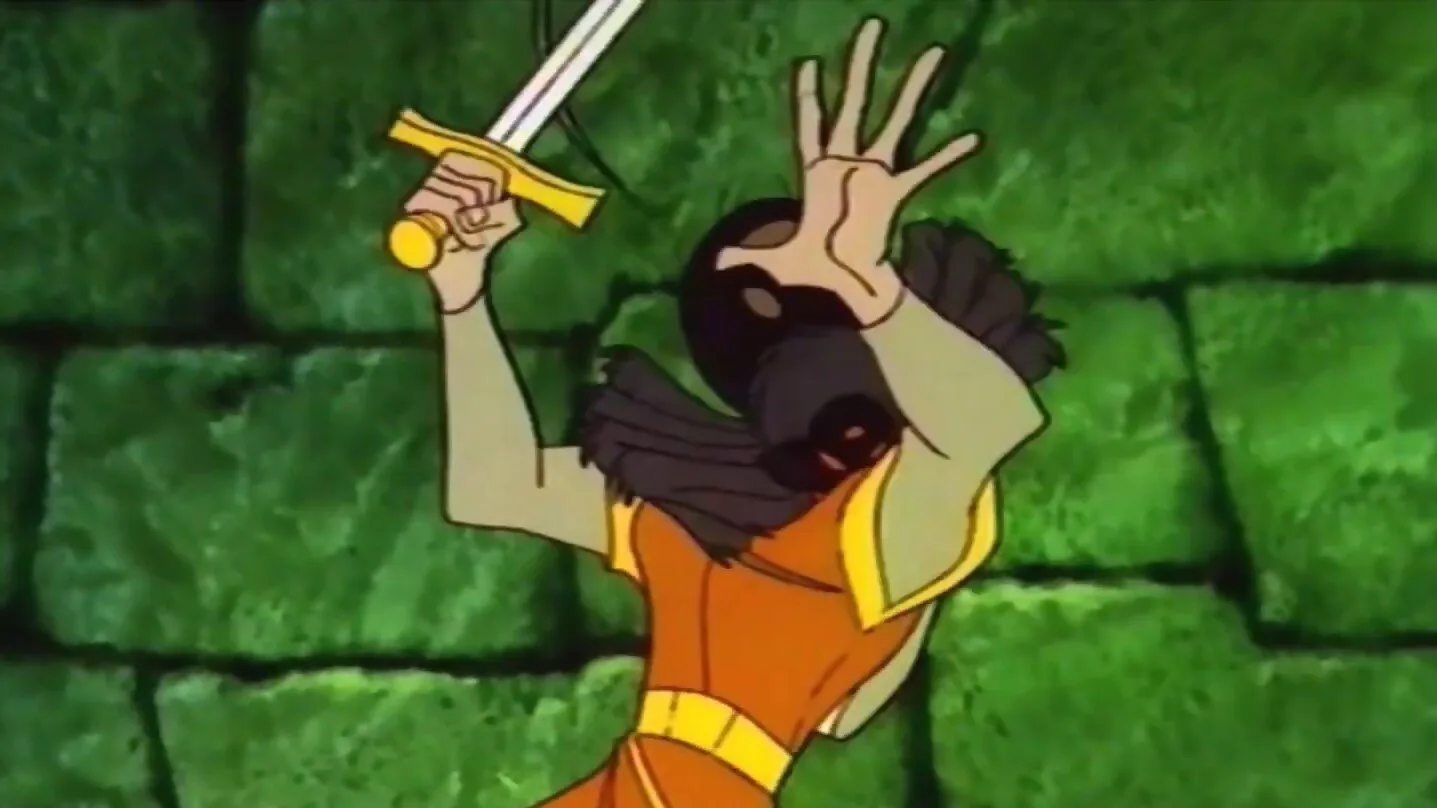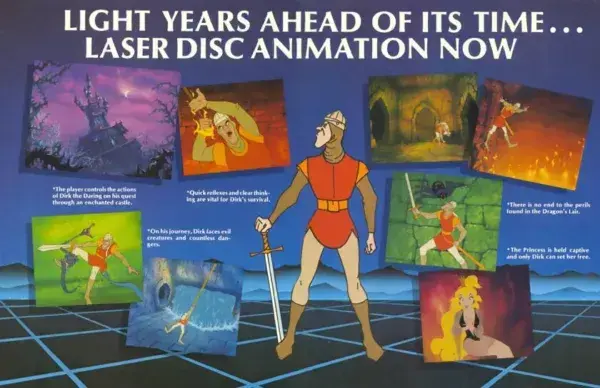
Dragon’s Lair was released in arcades on 19 June 1983, ushering in a boom in LaserDisc-based arcade machines.
There are few video games as influential as Dragon’s Lair, which wowed arcade goers with its incredible animation on its release on 19 June 1983. Many US arcade owners reported long queues to play the machine, and some even added an extra screen so gathered crowds could watch the action more easily. The game topped US arcade charts for months.
At the time, the US games industry was undergoing a huge slump, as sales arcade profits suddenly dipped and home console sales plummeted. Various causes have been put forward for the 1983 video game crash, but one big one was oversaturation, as the market became flooded with often poor-quality games.
Dragon’s Lair was heralded as the game that could turn the arcade’s fortunes around. Developed as a collaboration between game designer Rick Dyer and the animation studio created by ex-Disney animator Don Bluth, it used a LaserDisc player to display astonishingly crisp and smooth cartoon graphics, which were light years ahead of the blocky, simple pixel art of the time.

Credit: Flyer image from The Dragon’s Lair Project.
The game put you in control of Dirk the Daring, who was on a quest to rescue Princess Daphne from the clutches of the dragon Singe. In each section, an animation segment would play, showing, for example, Dirk crossing a castle drawbridge, only to plummet through the rotten wood and be attacked by tentacled monsters in the moat. The player would then have to quickly press a button or move the joystick in a certain direction to save Dirk: in this case, they would have to whack the sword button to fend off the monsters. Hitting the wrong input or failing to react in time would see Dirk meet a grisly end.
Dragon’s Lair wasn’t the first LaserDisc arcade game – it was preceded by Sega’s Astron Belt, which was released in Japan the year before – but it was the one that kickstarted a short-lived boom in LaserDisc arcade machines in the US. Rick Dyer and Don Bluth followed up on its success with Space Ace in 1984, and various other manufacturers scrambled to produce LaserDisc titles of their own, like Cliff Hanger from Stern Electronics and Cobra Command from Data East, although none managed to capture the huge audience of Dragon’s Lair.
Rick Dyer’s company RDI even began developing a home LaserDisc console called the Halcyon, which was set to be released in 1985 and featured a very early example of voice control. However, the costly machine would have ended up retailing for somewhere in the region of $2,500, and RDI went bust before it could be released. Only a handful of Halcyon prototypes are known to exist, and they now change hands for many thousands of dollars, being something of a Holy Grail for collectors.
Ultimately, LaserDisc arcade games were something of a fad, but Dragon’s Lair is still fondly remembered by players who recall just how much of an impact it made on its release in 1983, and it has been re-released many times, as well as spawning several sequels and spin-offs. There’s even a Dragon’s Lair movie in the works. In March 2020, Netflix announced it had secured the rights to make a film based on the game, and Ryan Reynolds is set to star, with his company Maximum Effort taking on a production role. There’s life in the old dragon yet, it seems.
Read more: Poetry in motion – FMV’s unlikely revival





